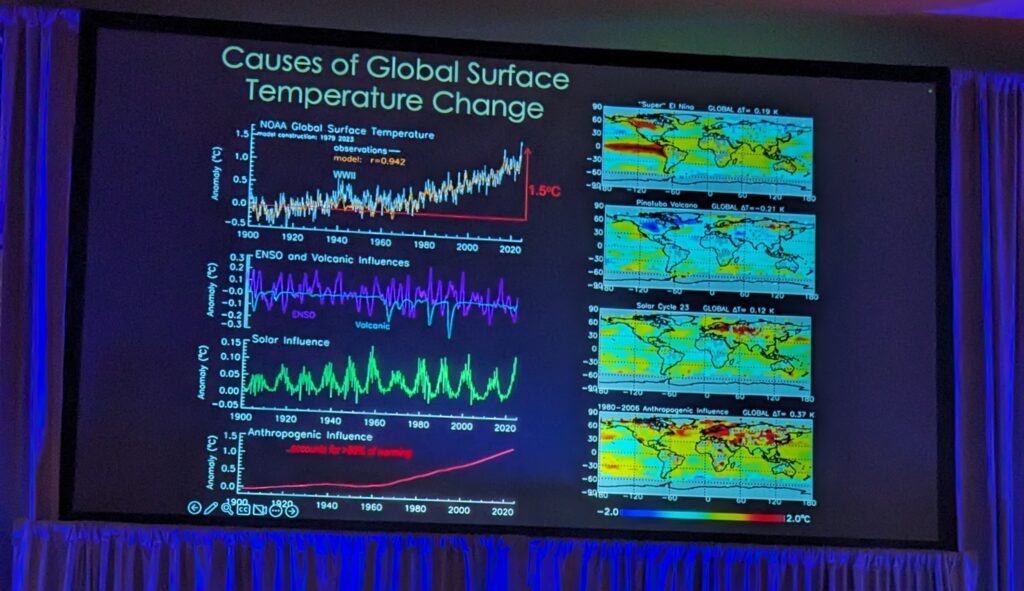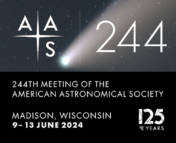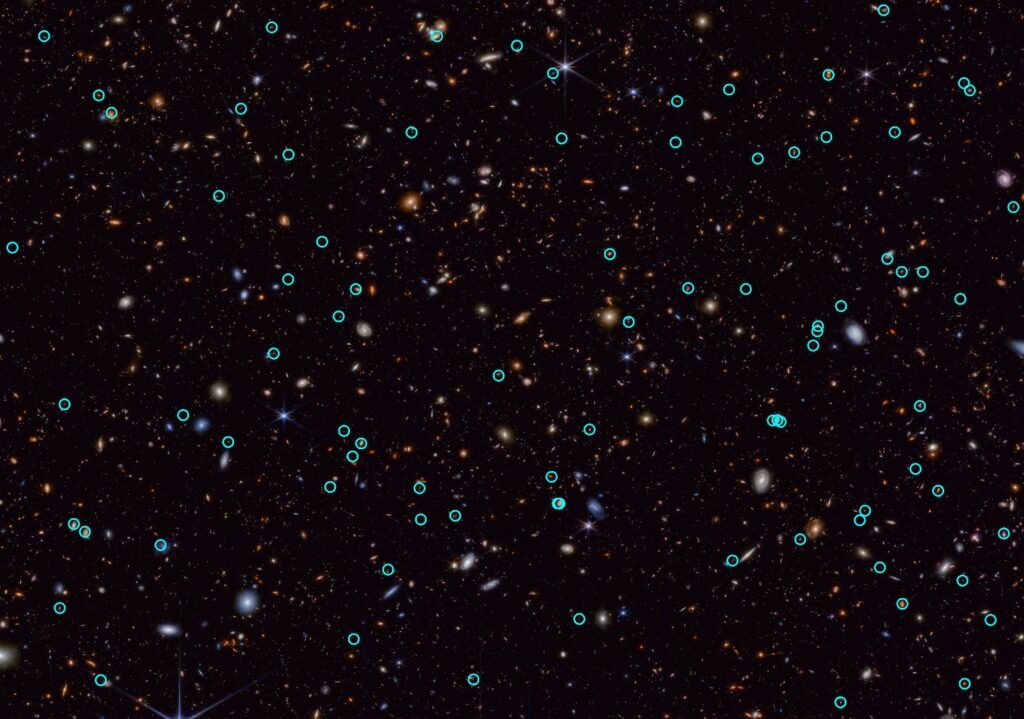
Welcome to the summer American Astronomical Society (AAS) meeting in Madison, WI! Astrobites is attending the conference as usual, and we will report highlights from each day here. You can also follow us on Bluesky at astrobites.bsky.social for more meeting content. We’ll be posting once a day during the meeting, so be sure to visit the site often to catch all the news!
Table of Contents:
- Fred Kavli Prize Plenary Lecture: UNCOVERing Astronomical Gems from Our Backyard to the Edges of the Observable Universe (Rachel Bezanson, University of Pittsburgh)
- Press Conference: Disks, Atmospheres, and Astronomy from the Moon
- Plenary Lecture: Ices in Our Backyard: Searching Ices in the Solar System with JWST (Noemi Pinilla-Alonso, Florida Space Institute)
- Press Conference: Stars and Their Antics
- Plenary Lecture: The Broad Legacy of George Ellery Hale: Observatories, Institutions, and Civic Development (Sam Hale, Alliance of Historic Observatories)
- Solar Physics Division George Ellery Hale Prize Lecture: Solar Irradiance: Earth’s Energy Source (Judith Lean, University of Colorado)
Fred Kavli Prize Plenary Lecture: UNCOVERing Astronomical Gems from Our Backyard to the Edges of the Observable Universe, Rachel Bezanson (University of Pittsburgh) (by Nathalie Korhonen Cuestas)
The James Webb Space Telescope (JWST) has pushed our cosmic horizons well beyond what we could previously observe. Its incredible sensitivity, instrument suite, and wavelength coverage makes it excellent at observing previously invisible distant galaxies. These early galaxies can help us understand how galaxies form stars, when they stop growing so rapidly, and how a central supermassive black hole might affect galaxy growth. During this year’s Kavli lecture, Prof. Rachel Bezanson discussed how her JWST program UNCOVER is helping us answer these questions.
UNCOVER uses the power of gravity to unlock a Pandora’s box of high-redshift galaxies. Normally, light travels in a straight line, but this can change if a heavy enough object warps spacetime enough to bend light. This effect is known as gravitational lensing and results in the images of galaxies being distorted and, more importantly, magnified. Gravitational lensing allows us to see galaxies that would otherwise be too faint and resolve galaxies that would otherwise be too small.
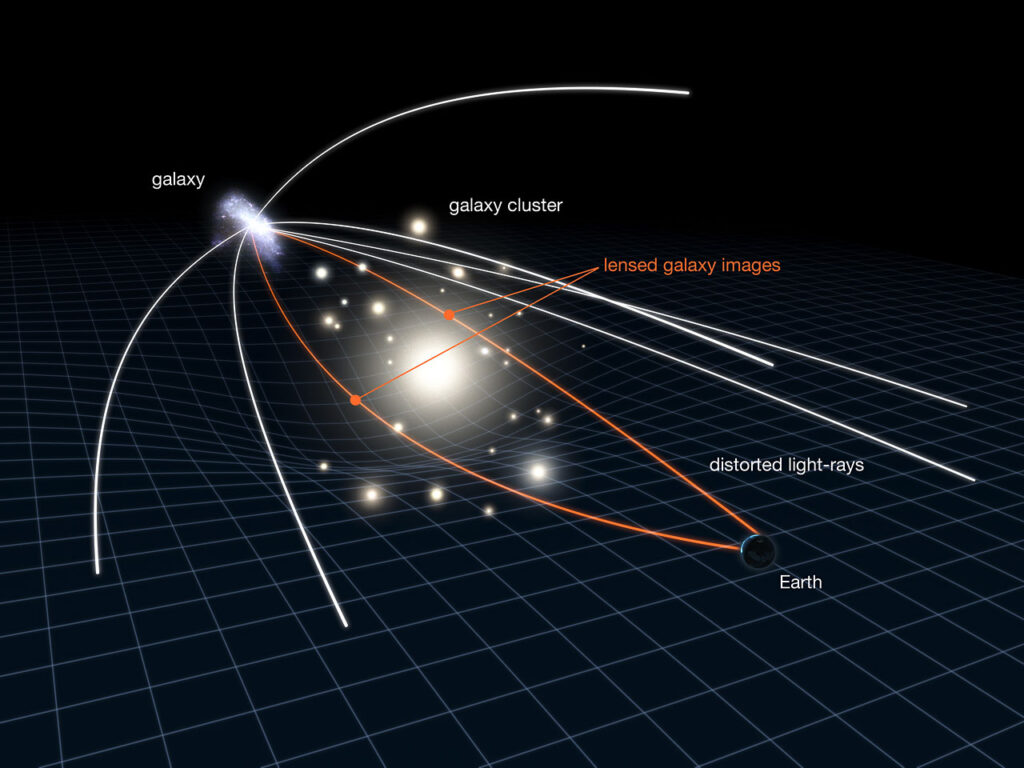
By observing galaxies which have been lensed by a massive galaxy cluster Abell 2744 (also known as Pandora’s cluster), Prof. Bezanson is challenging our previous assumptions about galaxy evolution. Many of the galaxies she’s observed are very massive — they can be as massive as the Milky Way, yet their age is just 3% of the age of the universe — and have signatures of evolved stellar populations in their spectra. Some also have supermassive black holes that are much more massive than we’d expect. Our models for galaxy evolution have to be able to explain how these galaxies and their black holes have grown so large, so quickly. Further JWST observations and development of our theoretical models will begin to answer long-held questions and bring up new ones.
Press Conference: Disks, Atmospheres, and Astronomy from the Moon (by Kerry Hensley)
The first presentation of the AAS 244 press conference series, given by Lisa Prato (Lowell Observatory), tackled the topic of circumstellar disks. Circumstellar disks occur naturally during star formation, forming when a swirling cloud of gas collapses and creates one or more stars. These disks are the sites of planet formation and dissipate after roughly 10 million years, although the time frame can be far shorter. It’s not yet known what sets the lifetime of a circumstellar disk. To learn more, Prato’s team studied planet-forming disks around binary stars. Stars in a binary system have the same age, composition, and radiation environment. Differences in the disks around these stars can then be traced to differences in the stellar properties, such as mass and rotation rate. Prato’s team used the Keck Observatory and the Atacama Large Millimeter/submillimeter Array (ALMA) to observe the circumstellar disks of the FO Tau and DF Tau binary systems. The two stars of FO Tau each had a tidy circumstellar disk and appeared similar in the data from both observatories. Keck data suggested that one star in the DF Tau system lacked a disk, but ALMA showed something different: the secondary star in the system has a disk with a large gap in the middle! Prato proposed that a possible misalignment of the secondary star’s disk could be related to the formation of the cavity.
Moving forward in the planet-formation process, Christine Chen (Johns Hopkins University/Space Telescope Science Institute) reported on JWST observations of a debris disk around the young, nearby star Beta Pictoris. In the debris disk phase, the original gas and dust of the disk have mostly dissipated, and planet formation is underway; as planetesimals form, they collide and create rocky rubble and dust. Twenty years ago, the Spitzer Space Telescope detected several types of dust around the star Beta Pictoris, which is known to be orbited by two giant planets. Looking at the star again with JWST in 2023, Chen’s team saw that two of the dust components — hot dust and small, cold forsterite dust grains — had disappeared. Piecing together the clues, Chen’s team proposed that a collision between giant asteroids some 20–30 years ago created the dust seen by Spitzer; by the time JWST turned toward the system, radiation pressure had whisked the small dust grains out of the system, resulting in the less-featured spectrum seen today. Other data support the collision scenario, including 2022 JWST observations of a “cat tail” feature in the disk’s emission and 2014 ALMA observations of carbon monoxide gas.
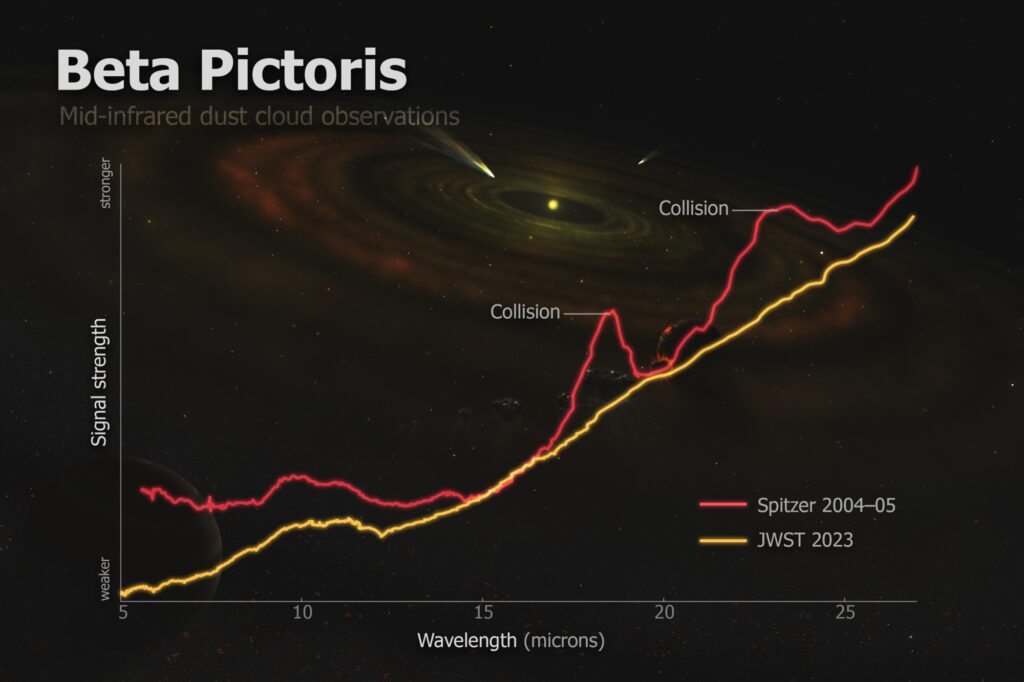
Moving from planet formation to fully formed planets, Thomas Beatty (University of Wisconsin-Madison) presented new JWST observations of a sub-Neptune exoplanet named GJ 3470 b. Astronomers can compare the composition of exoplanet atmospheres to the composition of protoplanetary disks to understand the planet-formation process, much like a baker might try to discern the steps needed to make a finished cake from a list of ingredients. Astronomers have mostly looked for carbon and oxygen in exoplanet atmospheres over the last two decades, but there are many other ingredients to look for. Using JWST to observe GJ 3470 b, Beatty’s team found water, methane, carbon monoxide, carbon dioxide, and a surprising compound: sulfur dioxide. Sulfur dioxide has been seen in the atmosphere of another exoplanet, WASP-39b, which is twice as hot and a hundred times more massive than GJ 3470 b. The researchers didn’t expect to find so much of this molecule in the atmosphere of a small and cool exoplanet — in fact, the planet’s atmosphere contains more than a million times more sulfur dioxide than expected. Sulfur dioxide is a major new ingredient that can be used to trace the formation of small sub-Neptune exoplanets, which are one of the most common types of planets.
Lastly, Jack Burns (University of Colorado Boulder) presented the results of a recent mission to land a radio telescope near the Moon’s south pole: Radio wave Observations at the Lunar Surface of the photo Electron Sheath (ROLSES). For the first time in more than 50 years, NASA landed a scientific payload on the Moon in February 2024. While there were a few bumps along the way — a 2.5-meter antenna deployed unexpectedly in transit, and a failure of the laser-guided navigation system resulted in a too-hard impact that snapped one of the landing legs and tilted the lander nearly on its side — the mission was a success. The lander, observing Earth as would a distant observer for whom our planet is an exoplanet, collected Earth’s radio signals. This is essentially a redo of Carl Sagan’s SETI experiment, which used a close flyby of Earth by the Galileo spacecraft to understand how our planet might look to an extraterrestrial observer. The ROLSES radio spectrum greatly improved upon the measurements from Galileo, providing crucial data to be compared to future observations of exoplanet radio emissions made from telescopes on the far side of the Moon. The future of lunar radio astronomy is bright: NASA has already funded a successor to ROLSES that will fly in 2026, along with the Lunar Surface Electromagnetics Experiment-Night (LuSEE-Night) mission (also in 2026), which will perform cosmological observations from the lunar farside, shielded from terrestrial radio emissions.
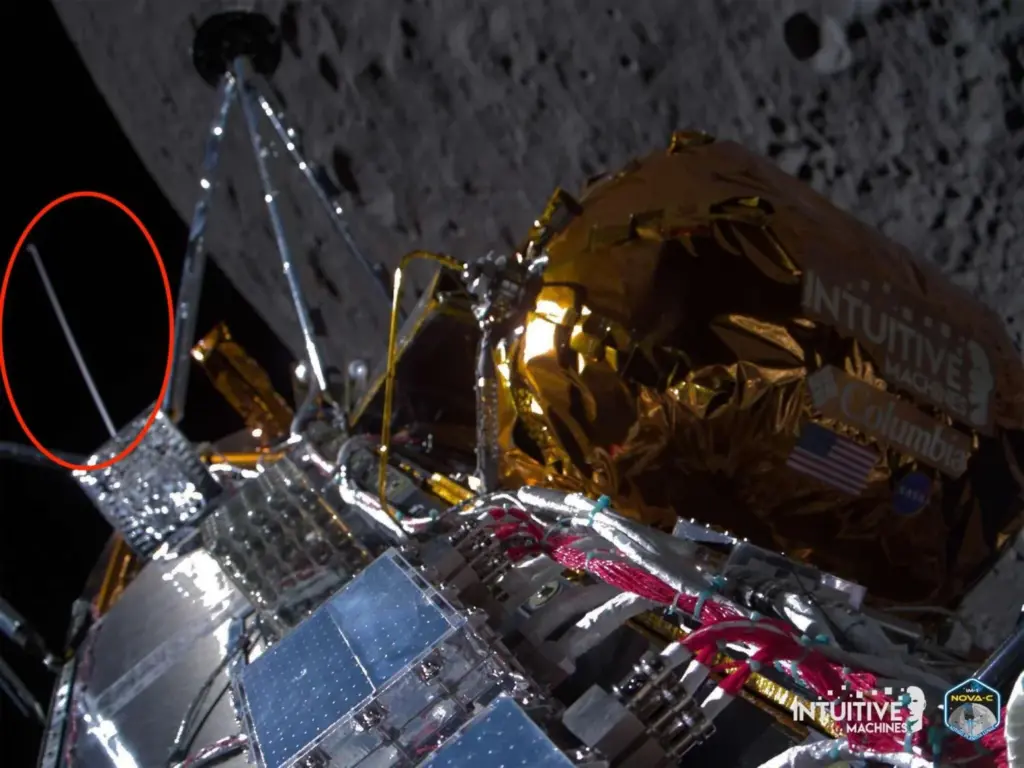
Plenary Lecture: Ices in Our Backyard: Searching Ices in the Solar System with JWST, Noemi Pinilla-Alonso (Florida Space Institute) (by Will Golay)
Noemí Pinilla-Alonso, a planetary science professor at the Florida Space Institute and the University of Central Florida, gave the final talk of the inaugural morning of AAS 244. In her talk, she described the different kinds of ice in our solar system and discussed what they can tell us about the formation of planetary systems and their relationship to the interstellar medium and molecular clouds.
Ices in our solar system encode information about various stages of its formation history. The most distant objects, broadly categorized as “trans-Neptunian objects” (TNOs), span a spectrum of ice histories. Some of these dirty, icy bodies never melted and thus trace the conditions of the solar nebula. Others have undergone some melting and differentiation; observations of these objects can probe the process of planetary growth and the diffusion of molecules throughout the solar system.
Although TNOs can provide many insights into the solar system’s formation (and the formation of planetary systems in general), they have remained largely unexplored because they are often small and distant, making detailed photometric and spectroscopic studies challenging. Pinilla-Alonso highlighted how the James Webb Space Telescope (JWST), the premier space telescope for infrared observations, will uncover the secrets of our most distant solar system members with its unprecedented spectroscopic capabilities.
Pinilla-Alonso shared preliminary results from her Cycle 1 JWST program, DISCo. In this program, her collaboration used the NIRSpec and MIRI instruments to collect infrared spectra of ~60 TNOs that they identified as having various properties. With these observations, they found that the spectra of TNOs fall into three major groups: bowl-type, double-dip-type, and cliff-type. These three categories are physically characterized by the molecules that create these features in the infrared spectra. The bowl-type TNOs are rich in water ice, with some carbon dioxide. The double-dip-type has lots of carbon dioxide and carbon monoxide ice and evidence of more complex organics. Finally, the cliff-type sources have many organic molecules but less carbon dioxide and carbon monoxide.

Although previous observations had only hinted at a transition in the composition of TNOs based on where they formed relative to the “ice lines” (or the distances at which a particular molecule freezes), these JWST observations provide a much stronger case for the origin of TNO diversity. Pinilla-Alonso highlighted that these results indicate we can use the properties of TNOs to learn about the primordial planetesimal disk in a new way. Her collaboration is completing additional analyses of their JWST data, and we should expect more results to come soon.

Press Conference: Stars and Their Antics (by Ben Cassese)
In the afternoon, attendees once again filed into the press briefing room ready to consume another round of news-worthy astronomy research. This session, titled “Stars and Their Antics,” contained talks on individual weird stars, the motions of enormous clusters, and some of the earliest explosions in the universe.
Up first was Adam Burgasser, University of California San Diego, who set the tone with a presentation on a newly discovered speedy star. This object, initially flagged through the citizen science program “Backyard Worlds: Planet 9” doesn’t provide observers the strongest first impression. It’s dim, red, and at only 8% the mass of the Sun with a surface temperature of about 2000K, it easily fits into the “L subdwarf” category of diminutive stars. But, what it lacks in presentation it more than makes up for with pep. Burgasser and colleagues clocked in moving at more than 100 km/s along the line of sight and more than 450 km/s in total. That’s more than a million miles an hour, or so fast that this star has a good chance of escaping the Milky Way altogether. So far the team is not sure how this star got so fast: it may have been kicked around by a supernova, or scattered off a black hole, or it could have fallen in from a satellite galaxy. However it got started, though, it won’t be around for long (cosmically speaking), and the researchers hope that additional measurements can help reveal both where it came from and where it’s going.
Up next was Janus Kozdon, a graduate student at Clemson University, who told the assembled audience about his work on a protoplanetary disk with a mysterious line profile. After models of the disk failed to provide a good fit, Kozdon and collaborators realized they could reproduce what they were seeing by considering not just one disk of emitting material, but a pair of two concentric ones. They landed on a best-fitting solution with two nested, eccentric disks, aligned so that their long axes face perfectly away from one another. This eccentricity was likely induced by a baby planet still in the process of growing and forming, a rare and exciting find.
Next was Ravi Sankrit, Space Telescope Science Institute, who shared his work on a symbiotic nova named HM Sagittae. This star, though “nondescript” when viewed in a contemporary single snapshot, has led an interesting life over the past half-century. Back in 1975, this star loudly announced to the world that it was actually a pair of tightly bound stars: an accreting white dwarf and a pulsating red giant called a Mira variable. This announcement came in the form of an explosion: material that had been siphoned off the Mira and onto the surface of the white dwarf ignited, and the system grew hundreds of times brighter thanks to the thermonuclear fireball. The pair have felt the effects of the explosion ever since and have been slowly fading towards their original brightnesses. Sankrit shared a comparison of observations taken each decade, including recent ones collected by the Cosmic Origins Spectrograph aboard the Hubble Space Telescope. By watching how different emissions lines have evolved over time, the researchers are beginning to model the long-term relaxation of this feisty system.
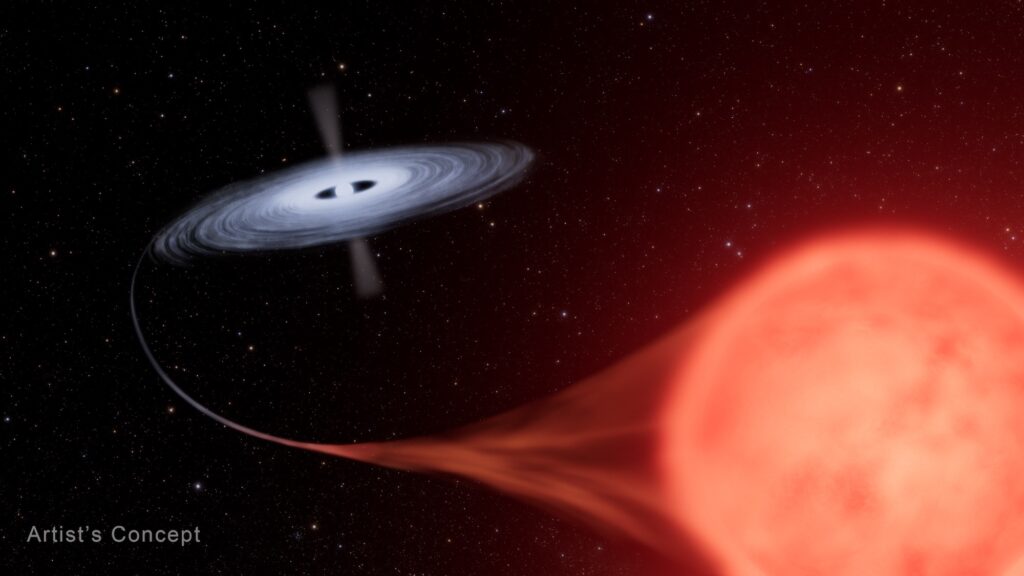
Sankrit was followed by Cameren Swiggum (whose hometown is Madison, WI!) from the University of Vienna. Swiggum and collaborators used data from the Gaia spacecraft to trace the trajectories of the nearest, youngest star clusters backwards in time. The team found that, intriguingly, the clusters seem to converge on three distinct but nearby locations about 30 million years ago. These locations must have been huge, dense, chaotic regions that spawned numerous stars quickly. These conditions are ideal for forming large stars that live fast and die young, and the team estimates that there could have been more than 200 supernovae caused by stars born in these progenitor clusters.
Christa DeCoursey, University of Arizona, and Justin Pierel, Space Telescope Science Institute, rounded out the session with an update on the JADES transient survey. JADES, or the JWST Advanced Extragalactic Survey, is an enormous collaborative effort that involves aiming JWST at a tiny patch of sky for more than 100 hours, waiting a year, then imaging that same patch again. The resulting ultra-deep images contain some of the most distant galaxies ever discovered. Equally interesting, however, are the smaller objects that appear in just one of the two photographs. A few dozen (relatively) bright dots appear in one image but not the other, meaning they must have flared up or died down quickly. The team identified these as supernovae, and given the locations and properties of their host galaxies, they must be some of the most distant eruptions seen to date. The Hubble Space Telescope managed to find about 20 truly faraway supernovae in 20 years, and in just one year of observations, the JADES team has already found 83 comparable events. It’s still early days, but JWST has already proven itself a capable supernova hunting machine, and the community can look forward to more observations of ancient explosions in the coming years.

Plenary Lecture: Plenary Lecture: The Broad Legacy of George Ellery Hale: Observatories, Institutions, and Civic Development, Sam Hale (Alliance of Historic Observatories) (by Catherine Slaughter)
Each year, the American Astronomical Society’s Solar Physics Division (SPD) awards the George Ellery Hale Prize to “a scientist for outstanding contributions to the field of solar astronomy.” On Monday, to preface the AAS 244 Hale prize talk, Sam Hale, grandson of George Ellery Hale, gave a lecture highlighting his grandfather’s work and multifaceted legacy of astronomical research and the advancement of the sciences in the United States. Sam himself is not an astronomer, but he presently serves as the CEO and Board Chairman for the Mount Wilson Observatory. He is also a founding member of the Alliance of Historic Observatories, an international consortium of famed astrophysics research sites.
As astronomers, whether or not we know his name, we are familiar with George Ellery Hale’s (GEH, as Sam Hale refers to him) legacy. In the talk, Hale laid out his grandfather’s many achievements. GEH is known for spearheading the construction of the Yerkes, Palomar, and Mount Wilson observatories, his work in heliophysics and the invention of the spectroheliograph, and his efforts to elevate American science on the world stage and establish international partnership between European and American astronomers. In addition, GEH was an original member of the AAS and founder of the Astrophysical Journal.
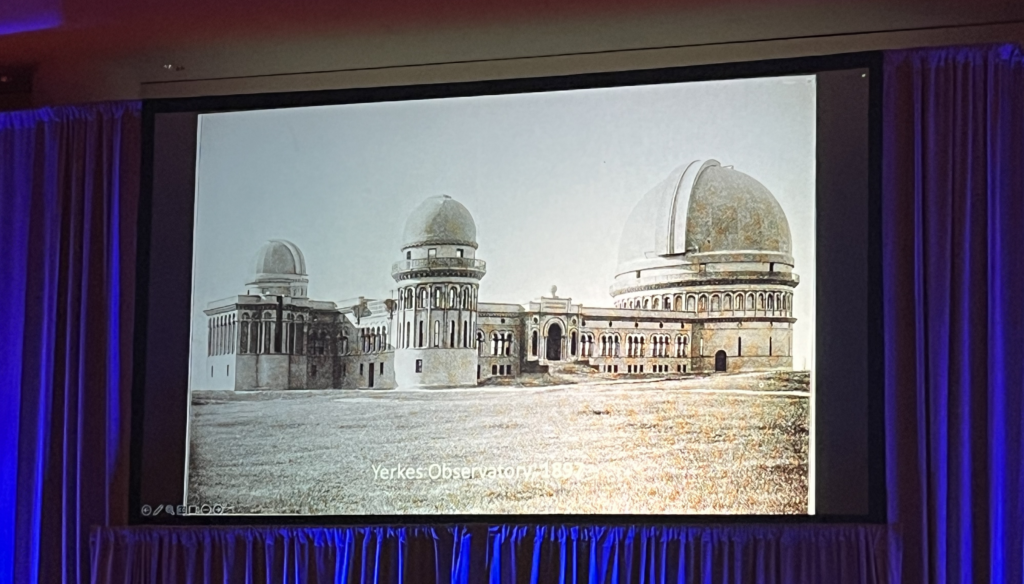
Interwoven with stories of his grandfather’s achievements, Hale featured many of the significant scientific discoveries made by other astronomers using the resources GEH worked to build. Of particular note is Edwin Hubble’s work on Mount Wilson, where he took the observations of distant galaxies that became our foundational evidence that the Universe is expanding.
At the end of the session, Hale left the audience with the reminder that it was his grandfather’s “insatiable curiosity” that drove him through life — a curiosity that continues to benefit the field to this day.
Be sure to take a look at our interview with speaker Sam Hale for more!
Solar Physics Division George Ellery Hale Prize Lecture: Solar Irradiance: Earth’s Energy Source, Judith Lean (University of Colorado) (by Jessie Thwaites)
Following Sam Hale’s plenary discussing the life and work of his grandfather, the George Ellery Hale Prize was awarded to Dr. Judith Lean, for her work on solar irradiance. When you look up “total solar irradiance,” you’ll find that people once thought the total radiative output of the Sun was a constant — but as Dr. Lean describes, it’s anything but!

The solar irradiance is the radiative output of the Sun, which is inherently interconnected with Earth’s atmosphere and climate. The Sun undergoes an 11-year cycle, which determines how much power is emitted. It can have any number of sunspots, which decrease the Sun’s irradiance, or bright faculae, which do the opposite. The irradiance is driven by the magnetic structure of the Sun, and Dr. Lean has developed a model of the Sun’s dynamo to understand these fluctuations. That model, based on 40 years of observations of the Sun, helps us to understand the cycles of the Sun (in addition to the 11-year cycle, it also undergoes a 27-day cycle due to its rotation, a 100-year cycle, and a 2400-year cycle that are able to change the amplitude of the minima and maxima for the cycle), and predict the Sun’s activity for the future.
This is also inherently connected to climate on Earth, and an important part of understanding climate change. Although the Sun is variable, and can raise or lower Earth’s temperature depending on the solar power output, this and other natural factors alone cannot explain the full increase in global surface temperature. The global change in temperature has already surpassed the 1.5 degree Celsius “climate threshold,” and with every 0.1 degree of additional warming we will begin to see exponential effects. By understanding the solar cycle, we can better understand the trends happening in our changing climate.
